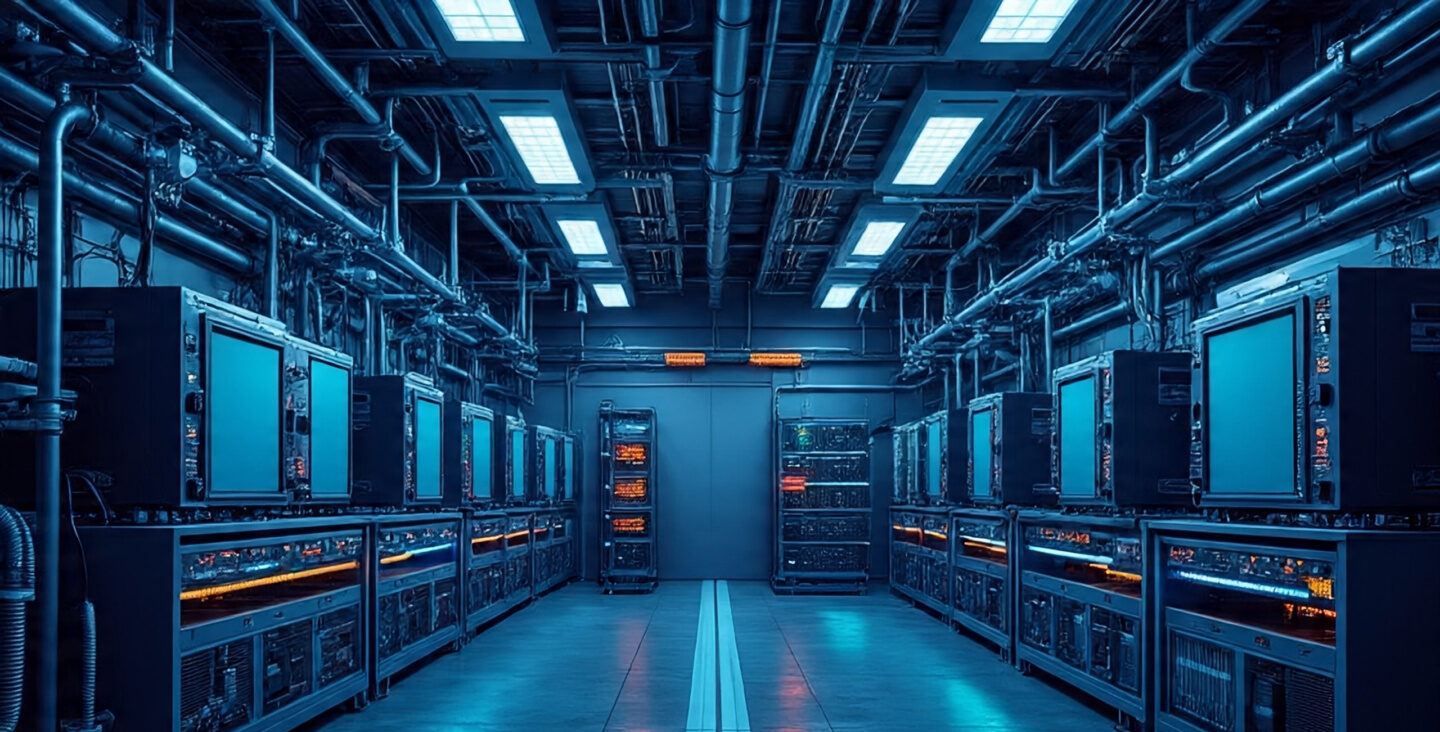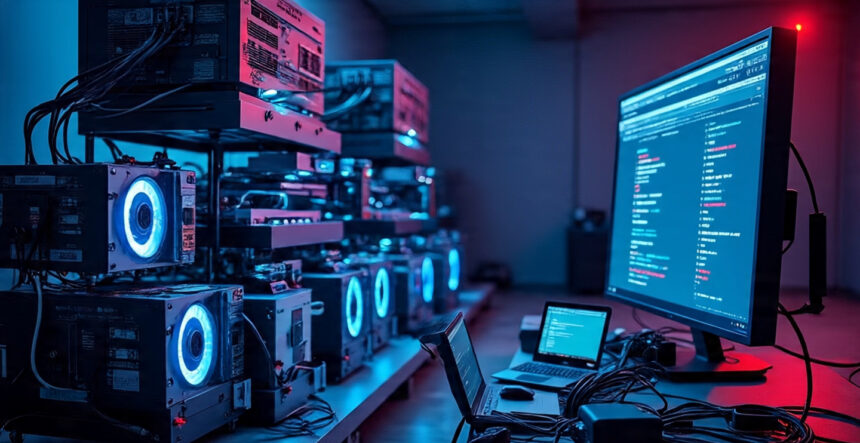Building a successful enterprise bitcoin mining setup has become one of the most lucrative opportunities in the cryptocurrency industry. As Bitcoin continues to mature and gain mainstream adoption, large-scale mining operations are generating substantial returns for investors who understand the complex infrastructure requirements. An enterprise bitcoin mining setup involves much more than purchasing a few ASIC miners – it requires careful planning of power infrastructure, cooling systems, facility management, and regulatory compliance to ensure long-term profitability and sustainability.
The enterprise-level approach to Bitcoin mining differs significantly from residential or small-scale operations, demanding sophisticated planning and substantial capital investment. However, the rewards can be exceptional for those who execute their enterprise bitcoin mining setup correctly, with many industrial operations reporting profit margins exceeding 50% during favorable market conditions.
Understanding Enterprise Bitcoin Mining Setup Requirements
Capital Investment and Infrastructure Planning
An enterprise bitcoin mining setup requires significant upfront capital, typically ranging from $500,000 to several million dollars depending on the scale of operations. The primary components include ASIC mining hardware, electrical infrastructure, cooling systems, facility construction or leasing, and operational management systems.
The most successful enterprise mining operations invest heavily in site selection, choosing locations with access to cheap, reliable electricity and favorable regulatory environments. States like Texas, Wyoming, and North Dakota have become popular destinations for enterprise bitcoin mining setups due to their abundant renewable energy resources and crypto-friendly regulations.
Hardware Selection and Procurement
Modern enterprise bitcoin mining setup relies heavily on the latest generation ASIC miners, such as the Antminer S19 XP, Whatsminer M50S, and AvalonMiner 1246. These machines offer hash rates between 110-140 TH/s with power consumption ranging from 3,000-3,500 watts per unit.
When planning hardware procurement for an enterprise bitcoin mining setup, consider factors such as:
- Energy efficiency (measured in watts per terahash)
- Reliability and warranty terms
- Manufacturer support and parts availability
- Upgrade pathways for future technology releases
Large-scale operations often negotiate directly with manufacturers for bulk pricing, potentially saving 15-25% compared to retail prices while securing priority access to new hardware releases.
Power Infrastructure for Enterprise Bitcoin Mining Setup
Electrical Requirements and Grid Connection
Power consumption represents the largest ongoing expense in any enterprise bitcoin mining setup, typically accounting for 60-80% of operational costs. A mid-sized facility running 1,000 ASIC miners requires approximately 3-4 megawatts of continuous power supply.
Establishing proper electrical infrastructure involves:
- High-voltage transmission line connections
- Transformer stations and distribution equipment
- Backup generator systems for power redundancy
- Power monitoring and management systems
- Compliance with local utility regulations
Many enterprise operations negotiate directly with utility companies for industrial power rates, which can be 30-50% lower than standard commercial rates. Some facilities also invest in renewable energy sources such as solar or wind farms to reduce long-term electricity costs and improve environmental sustainability.
Cooling Systems and Climate Control

Effective cooling is critical for maintaining optimal performance in an enterprise bitcoin mining setup. ASIC miners generate substantial heat output, requiring sophisticated ventilation and cooling systems to prevent equipment damage and maintain efficiency.
Industrial cooling solutions include:
- Immersion cooling systems using dielectric fluids
- Advanced air circulation with high-capacity fans
- Evaporative cooling in suitable climates
- Heat recovery systems for secondary applications
Some innovative facilities capture waste heat for greenhouse operations, residential heating, or industrial processes, creating additional revenue streams while improving overall energy efficiency.
Facility Design and Construction
Site Selection Criteria
Choosing the right location for an enterprise bitcoin mining setup involves evaluating multiple factors that directly impact profitability and operational efficiency. Key considerations include electricity costs, climate conditions, internet connectivity, regulatory environment, and proximity to technical support services.
Optimal locations typically feature:
- Access to electricity at $0.03-0.06 per kWh
- Cool, dry climates to reduce cooling costs
- Reliable internet with redundant connections
- Supportive local government and zoning laws
- Proximity to equipment suppliers and technicians
Building Design and Layout
Purpose-built facilities for enterprise bitcoin mining setup incorporate specific design elements to optimize airflow, power distribution, and equipment maintenance. Modern mining facilities often feature:
- Open warehouse designs with high ceilings
- Strategic placement of intake and exhaust systems
- Modular rack systems for easy equipment installation
- Dedicated areas for equipment staging and repairs
- Security systems including cameras and access controls
The most efficient facilities use a “hot aisle, cold aisle” configuration that separates intake and exhaust air flows, significantly improving cooling efficiency and reducing operational costs.
Financial Planning and ROI Analysis
Initial Investment Calculations
Developing a comprehensive financial model for an enterprise bitcoin mining setup requires detailed analysis of all capital and operational expenses. Initial investment components typically include:
Hardware Costs: $3,000-5,000 per ASIC miner Infrastructure: $1,000-2,000 per miner capacity Facility Costs: $500-1,500 per miner depending on construction vs. lease Working Capital: 3-6 months of operational expenses
A 1,000-miner facility might require $8-12 million in initial capital, with larger operations benefiting from economies of scale that reduce per-unit costs.
Revenue Projections and Market Analysis
Bitcoin mining profitability depends on several variables including Bitcoin price, network difficulty, block rewards, and operational efficiency. Successful enterprise bitcoin mining setup operators use sophisticated modeling tools to project returns under various market scenarios.
Key performance metrics include:
- Daily Bitcoin production per miner
- All-in operational costs per Bitcoin
- Return on invested capital (ROIC)
- Break-even Bitcoin price levels
Conservative financial models typically assume Bitcoin prices 20-30% below current market levels to account for volatility and ensure sustainable operations during market downturns.
Operational Management and Optimization
Monitoring and Maintenance Systems
Enterprise bitcoin mining setup requires sophisticated monitoring systems to track equipment performance, power consumption, temperature levels, and network connectivity in real-time. Modern facilities use centralized management platforms that provide:
- Individual miner performance tracking
- Automated alert systems for equipment failures
- Predictive maintenance scheduling
- Energy consumption optimization
- Remote troubleshooting capabilities
Proactive maintenance programs significantly extend equipment lifespan and maintain optimal hash rates, with well-managed facilities achieving 95%+ uptime across their mining fleets.
Staff Requirements and Training
Operating an enterprise bitcoin mining setup requires skilled technical staff capable of maintaining complex electrical and computing systems. Typical staffing includes:
- Facility managers with industrial experience
- Electrical technicians certified for high-voltage work
- IT specialists familiar with mining software and networking
- Security personnel for 24/7 facility protection
- Administrative staff for accounting and compliance
Many operators invest heavily in employee training and retention, as experienced mining technicians command premium salaries and significantly impact operational efficiency.enterprise bitcoin mining setup
Regulatory Compliance and Risk Management

Legal and Environmental Considerations
Enterprise bitcoin mining setup must comply with numerous regulations including environmental permits, electrical codes, zoning requirements, and cryptocurrency regulations. Key compliance areas include:
Environmental Impact: Air quality permits, noise regulations, and environmental impact assessments Electrical Safety: National Electrical Code compliance, utility interconnection agreements Financial Reporting: Tax obligations, cryptocurrency transaction reporting Data Privacy: Customer data protection if offering hosting services
Working with experienced legal counsel familiar with cryptocurrency regulations is essential for maintaining compliance and avoiding costly penalties or operational shutdowns.
Insurance and Risk Mitigation
Comprehensive insurance coverage protects enterprise bitcoin mining setup investments from various risks including equipment failure, natural disasters, and business interruption. Essential coverage types include:
- Equipment and property insurance
- Business interruption coverage
- Cyber liability protection
- Directors and officers insurance
- Environmental liability coverage
Risk mitigation strategies also include geographic diversification, equipment redundancy, and comprehensive backup and recovery .
Technology Trends and Future Considerations
Next-Generation Mining Hardware
The Bitcoin mining industry continues to evolve with more efficient hardware and innovative cooling solutions. Upcoming developments that will impact enterprise bitcoin mining setup include:
- Next-generation ASIC chips with improved energy efficiency
- Immersion cooling becoming mainstream for large operations
- Integration with renewable energy systems
- Artificial intelligence for predictive maintenance and optimization
Staying current with technological developments is crucial for maintaining competitive advantages and ensuring long-term profitability.
Sustainability and ESG Considerations
Environmental, social, and governance (ESG) factors are increasingly important for enterprise bitcoin mining setup, particularly as institutional investors and regulators focus on cryptocurrency’s environmental impact. Leading operations are implementing:
- Renewable energy integration
- Carbon offset programs
- Waste heat recovery systems
- Community engagement initiatives
- Transparent sustainability reporting
Companies that proactively address sustainability concerns position themselves favorably for future growth and investment opportunities.
Conclusion
Building a successful requires careful planning, significant capital investment, and ongoing operational expertise. The most profitable operations combine access to low-cost electricity, efficient hardware procurement, sophisticated facility design, and professional management practices. While the initial investment is substantial, well-executed enterprise mining operations can generate exceptional returns for investors who understand the complexities of industrial-scale cryptocurrency mining.
For those considering entering the enterprise bitcoin mining space, start by conducting thorough market research, securing reliable electricity sources, and developing comprehensive financial models. The opportunity for substantial profits exists, but success depends on meticulous planning and professional execution of your.
For More: Bitcoin Mining Rig Setup Cost 2025 Guide









